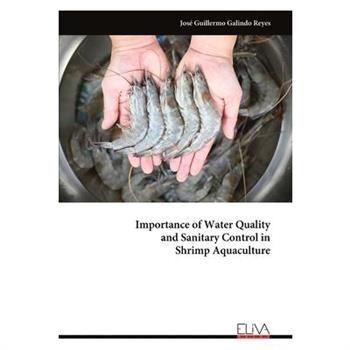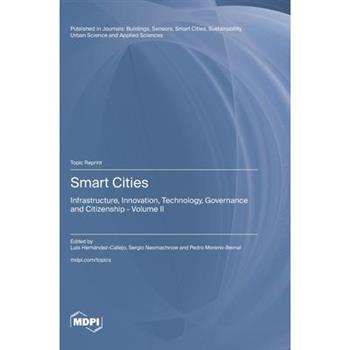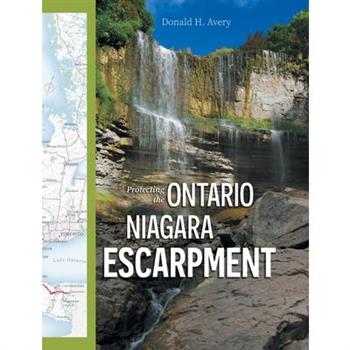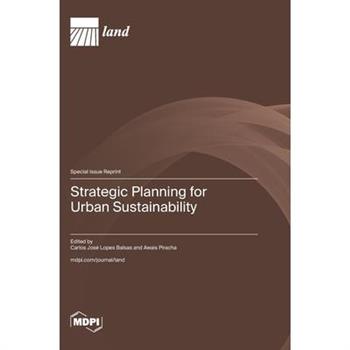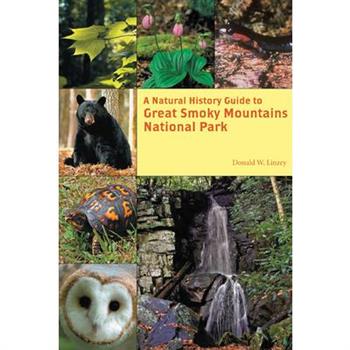Land of Everlasting Hills
At the turn of the twentieth century, the rugged peaks and lush valleys of the Great Smoky Mountains, once home to the Cherokee, were little known outside eastern Tennessee and western North Carolina. This dramatically changed with the arrival of two forces with very different visions: lumber companies who sought to fuel the nation's growth and profit from harvesting the abundant timber, and tourists who discovered the healthful qualities and natural beauty of the mountains. By the early 1920s, it became a race against time to protect the Great Smoky Mountain forests from decimation by commercial logging. Photography proved to be essential to this goal by showing the American people the extraordinary beauty of the landscape that was at risk of being lost. Two men--George Masa (raised as Shoji Endo), a Japanese immigrant in Asheville; and James "Jim" Thompson, a commercial photographer in Knoxville--were leaders in this effort, capturing exceptional images widely used in publications and portfolios for business and political leaders. In addition, the two men helped guide the effort to blaze the route of the nascent Appalachian Trail through the Great Smokies and beyond to its southern terminus in North Georgia. Jim Thompson lived to see the fruits of his labors, but George Masa, who died in 1933 and was buried in a pauper's grave, did not. Land of Everlasting Hills details the lives and work of Masa and Thompson, both of whom were influential in the decade-long campaign to establish a national park and to protect the scenic beauty and rich diversity of the Great Smoky Mountains. In addition to the historical and biographical narrative--which includes more than thirty relevant photographs embedded within the text--the large-format book features a selection of photographic plates representing the exceptional images that Masa and Thompson created.
35 Natural Wonders of Georgia to See Before You Die
The expression "natural wonders" can often conjure images of far-flung destinations like the Grand Canyon, the peaks of the Rockies, or Niagara Falls. Yet Georgia, the largest state east of the Mississippi, is home to a wealth of wonders that rival any found beyond its borders. Such wonders include the Altamaha River, Georgia's own untamed Amazon; Providence Canyon, the "little Grand Canyon"; Brasstown Bald, Georgia's highest peak and only cloud forest; and the vast, hauntingly beautiful Okefenokee Swamp. Based on noted science journalist Charles Seabrook's personal bucket list and artist Ann Litrel's insightful watercolors and sketches, 35 Natural Wonders of Georgia to See before You Die offers a fresh take on Georgia's natural beauty in the tradition of naturalists such as John James Audubon and William Bartram. Each of the thirty-five sites is introduced by paintings, field sketches, artist notes, and elegant science writing that highlight its unique attributes. The book captures the beauty and rich natural history of Georgia's biological and geological treasures--inspiring leisure travelers, nature enthusiasts, and art lovers to explore these places on their own.
Importance of Water Quality and Sanitary Control in Shrimp Aquaculture
In recent years, shrimp aquaculture has been experiencing serious problems, mainly due to poor water quality and poor sanitary operations, which has led to economic losses and low-quality products. This has caused shrimp farms to close down or reduce their economic profits. This book provides the results of studies that demonstrate these problems. On the other hand, Asian countries are becoming the main producers, leaving other countries such as African and Latin American countries in a disadvantaged competitive condition; therefore, this book can give these countries the opportunity to improve their production techniques and thus become more competitive.
Smart Cities
Today, we are witnessing significant changes in our cities. As these transformations take place, research advancements must provide solutions to the various challenges that arise. Administrations, universities, and companies need to collaborate in establishing the foundations of smart cities.Examples of effective solutions include integrating renewable energy sources, enhancing energy efficiency in both construction and processes, promoting sustainable mobility, incorporating the Internet of Things (IoT) and smart systems, and developing advanced and efficient infrastructure. Additionally, addressing issues related to water and energy sustainability, food security, climate change, and sustainable development goals is crucial.The main pillars of a smart city are as follows: Energy efficiency and sustainabilityInfrastructure, energy, and the environmentMobility and IoTGovernance and citizenship
Genesis and Metallogeny of Non-ferrous and Precious Metal Deposits
The Special Issue in Minerals systematically synthesizes cutting-edge research on the mineralization theory of non-ferrous and precious metal deposits within the field of economic geology. Focusing on deposit types such as gold, lead-zinc, copper-molybdenum, and tin, the research employs multidisciplinary approaches across multiple scales, including isotopic geochemical tracing, the thermodynamic analysis of fluid inclusions, high-precision geochronology, and in situ microanalysis of minerals, to elucidate the mineralization geodynamic setting, deep-seated material-energy transfer processes, fluid evolution, and mechanisms of anomalous metal enrichment. The Special Issue addresses four key theoretical issues: 1) the role of crust-mantle interaction in the initial enrichment of precious metal elements; 2) the physicochemical controls on metal differentiation and precipitation during the evolution of magmatic-hydrothermal systems; 3) the driving mechanisms of multi-stage mineralization through the coupling of tectonic, fluid, and rock reactions; and 4) the role of surface-generated and deep-generated superimposed mineralization effects in the formation of complex deposits. These investigations not only establish a comprehensive theoretical framework for multi-element syngenetic mineralization but also advance the development of mineralization system models within the context of plate tectonics. Furthermore, they provide critical scientific insights for refining the genetic classification of metal deposits and enhancing the theoretical foundation for predicting global mineralization patterns.
Smart Cities
Today, we are witnessing significant changes in our cities. As these transformations take place, research advancements must provide solutions to the various challenges that arise. Administrations, universities, and companies need to collaborate in establishing the foundations of smart cities.Examples of effective solutions include integrating renewable energy sources, enhancing energy efficiency in both construction and processes, promoting sustainable mobility, incorporating the Internet of Things (IoT) and smart systems, and developing advanced and efficient infrastructure. Additionally, addressing issues related to water and energy sustainability, food security, climate change, and sustainable development goals is crucial.The main pillars of a smart city are as follows: Energy efficiency and sustainabilityInfrastructure, energy, and the environmentMobility and IoTGovernance and citizenship
Energy Efficient Educational Institutions
The escalating impacts of climate change and the intensifying calls for sustainability have placed a spotlight on the need for transformative action across all sectors of society. Among these, academic institutions hold a unique and powerful position. As hubs of innovation, education, and community engagement, universities and colleges have the potential to lead the charge in addressing climate challenges by adopting and advocating for zero-carbon emissions. By committing to sustainability, these institutions not only reduce their environmental impact but also educate and inspire the next generation to build a more sustainable world. The concept of zero carbon emissions, also referred to as net-zero emissions, entails balancing the amount of greenhouse gases emitted into the atmosphere with an equivalent amount removed or offset. In practical terms, achieving zero carbon emissions requires drastically reducing energy consumption, shifting to renewable energy sources, enhancing energy efficiency, and implementing carbon sequestration or offset strategies. School, colleges and university buildings consume less energy per square meter of covered surface compared with other types of buildings Academic institutions play a dual role in the transition to a zero-carbon future: as operational entities and as educators. This translates into transforming campus operations, infrastructure, and educational paradigms. The book follows a holistic approach investigating the legal, technological, social and economic aspects for achieving net-zero carbon emissions educational institutions. It could be useful to public and private stakeholders related with schools, colleges and universities. It could help them to design and implement their energy transition and to minimize or delete their carbon emissions associated with energy use according to EU target for net-zero carbon economy by 2050. The methodology followed, the information contained and the detailed presentation of several benign energy technologies which can be used in academic institutions increases the attractiveness of the book to various readers.
Weaving a Green Future
As climate change accelerates, industries worldwide face mounting pressure to adopt sustainable practices, and Kenya's textile manufacturing sector is no exception. Contributing 56% of the country's industrial pollution, this vital yet environmentally taxing industry is at a crossroads. Challenges and Opportunities for Green Transitions in Kenya's Textile Manufacturing delves into the critical transformation required for a greener, more sustainable future in this sector. Drawing on in-depth research from Thika Cloth Mill and Rivatex East Africa Company, the book uncovers the environmental challenges posed by traditional textile production processes, such as wastewater pollution, excessive chemical use, and high energy consumption. It explores the integration of green practices in manufacturing, the role of sustainability reporting, and the socio-economic implications of transitioning to a green economy. Through a mix of quantitative and qualitative analysis, this work reveals significant barrierssuch as insufficient knowledge, lack of clean technologies, and limited government support-while identifying promising opportunities. From the ""Reduce, Reuse, Recycle"" framework to eco-friendly materials and emerging certification initiatives, the book presents actionable strategies to reduce the industry's carbon footprint. With its sharp focus on Kenya's unique challenges and global insights into green transitions, this book is a must-read for policymakers, industry stakeholders, environmentalists, and academics. It emphasizes the need for robust policy alignment and political will to create a just and sustainable future for Kenya's textile sector.
Ghosts of the Farm
From the Wainwright Nature Prize Highly Commended author Nicola Chester, a rural narrative between two women in two different eras who both wanted to become farmers. "Nicola Chester will come to be seen as a Nan Shepherd of our time."--Nick Acheson, author of The Meaning of Geese This is the story of Miss White, a woman who lived in the author's village 80 years ago, a pioneer who realised her ambition to become a farmer during the Second World War, and how she worked to become accepted within this community. Nicola Chester, too, dreamed of becoming a farmer but working with horses was the only path open to her. Was it easier for women to become farmers in the 1940s than it is now? Moving between Nicola's own attempts to work outdoors and Miss White's desire to farm a generation earlier, Nicola explores the parallels between their lives - and the differences. Miss White buys a derelict farm and begins to renovate and modernize it. As ghost (barn) owls flit between these two worlds, Nicola draws connections with farming and rural life in both times, from the role of women in rural communities in the modern day to Miss White's experience in the 1940s. And how those farming modernizations have left the modern day with both a denuded landscape and farming community and a disconnect from nature. Increasingly, Nicola's research into past and present interlinks and illuminates her own battles to raise awareness of rural communities, outdoor work and the ongoing loss of farmland birds that were so familiar to Miss White. "An absolutely fascinating insight into women and farming. Nicola Chester really knows how to bring the past alive."--Claire Fuller, author of The Memory of Animals
Theoretical, Numerical and Experimental Studies on Clean Energy and Combustion
This topic entitled "Theoretical, Numerical and Experimental Studies on Clean Energy and Combustion" addresses recent theoretical, numerical and experimental advances in clean-combustion-related applications to address climate change concerns while taking advantage of the higher energy density of hydrocarbon and other fossil fuels compared to batteries. With the recent advancements in computational capacities and the widespread applications of machine learning in engineering problems, the role of numerical methods is becoming more and more important to improve existing models or develop new models that can help researchers to better understand the underlying physics of combustion, their interaction with other physical phenomena such as turbulence, and their impacts on the performance of the related applications at both fundamental and practical levels. This topic aimed at highlighting the most recent advances in the development and application of such numerical methods, backed up with strong theories and/or experimental studies.
Urban Resilience and Heritage Management
Cities, infrastructures, and territories are undergoing transformations driven by environmental, technological, and social shifts. These dynamics call for new tools and methodologies aligned with the UN Sustainable Development Goals (SDGs). In this context, cultural and natural heritage-both tangible and intangible-emerges as a key resource for resilience, reinforcing social cohesion and adaptive capacities in urban and rural areas. This Special Issue brings together original research and review articles that examine the role of heritage in building more resilient cities, territories, and landscapes. Contributions address diverse contexts-from small and medium-sized cities to metropolitan areas-highlighting hybrid urban legacies and the need for long-term resilience strategies. Cities, infrastructures, and territories are undergoing transformations driven by environmental, technological, and social shifts. These dynamics call for new tools and methodologies aligned with the UN Sustainable Development Goals (SDGs). In this context, cultural and natural heritage-both tangible and intangible-emerges as a key resource for resilience, reinforcing social cohesion and adaptive capacities in urban and rural areas. This Special Issue brings together original research and review articles that examine the role of heritage in building more resilient cities, territories, and landscapes. Contributions address diverse contexts-from small and medium-sized cities to metropolitan areas-highlighting hybrid urban legacies and the need for long-term resilience strategies.
Science and Technology for Water Purification
Water resource scarcity and water pollution are serious problems threatening the whole world. The supply of adequate freshwater is essential in order to guarantee the welfare of people and global economy development. Water scarcity and pollution remain two of the most pressing global challenges, with profound implications for public health, environmental sustainability, and economic development. As the global population continues to grow and industrial activities expand, the demand for clean, safe water is steadily increasing. Continuous research on water and wastewater treatment has promoted the evolution of water purification science and technology, leading to greater accessibility and affordability of clean water. Emerging technologies have also been studied to further support a sustainable water supply.This Reprint presents 9 rigorously peer-reviewed studies advancing water purification science and technology. The collection explores innovative approaches to pollutant removal, resource recovery, and process optimization, with particular emphasis on membrane technologies, bioremediation systems, and advanced oxidation processes. Selected contributions demonstrate successful applications of machine learning in water quality monitoring and novel reactor designs for energy-efficient treatment.
Field Guide to the Woody Plants of the Northern Forest
The Field Guide to the Woody Plants of the Northern Forest is a compact guide to the ecology, geography, and identification of the trees, shrubs, and wood vines of the northeastern United States and adjacent Canada. It 272 species, provides 80 quick guides and charts for rapid identification, and contains nearly 3,000 color drawings and photos.It is the first field guide in sixty-five years to cover the trees and shrubs of the Northern Forest Region; the first ever to include quick guides to habitats, buds, leaves, flowers, fruits, and families; and the first ever to use stacked photos and colored vector drawings throughout.A companion digital atlas with 2,200 additional images is available as a free download on the Atlas website, northernforestatlas.org.
Exploring Vancouver Naturehoods
Did you know that flies have halters? That hummingbird tail feathers sing? Or that bees have five eyes? The closer you look, the more incredible ordinary things become. Seen through the pages of an artist's sketchbook journal, the extraordinary biodiversity in our city comes into view. Exploring Vancouver Naturehoods takes a closer look at nature wherever you find it in our city, whether in a beautiful park, a tree-lined street, your backyard, or a plant poking through a crack in the sidewalk. These are Vancouver's "naturehoods" - any greenspace in your neighbourhood no matter how big or how small. This local artist uses her sketchbook as an opportunity to discover and explore nature throughout our city and as a portal to connect with community on many levels."
Protecting the Ontario Niagara Escarpment
Protecting the Ontario Niagara Escarpment explores the intersection of politics and conservation, business and public interests, and government and not-for-profit organizations over more than six decades to protect what is today a UNESCO World Biosphere. Reflecting on both environmental activism and government stewardship, author Donald H. Avery captures an important period in Canadian environmental history. Starting with an overview of the North American conservation movement in the 1960s and the important 1968 Gertler Niagara Escarpment Study, he examines the different work done by conservation organizations such as the Coalition on the Niagara Escarpment (CONE), statuary bodies such as the Niagara Escarpment Commission, and government departments and agencies to protect this unique landform until the present day. As part of his assessment, Avery examines the goals and strategies of competing social groups including mining interests, commercial real estate developers, landowners' groups and environmental organizations, while providing insight into how they used the political system to achieve their specific goals. This research is based on a wealth of environmental organizational records, government documents, news articles, and interviews with Niagara Escarpment Commission staff, that demonstrates how environmental activism and government stewardship made a difference.
Strategic Planning for Urban Sustainability
This Special Issue, "Strategic Planning for Urban Sustainability," fills a gap in the field regarding how land and the transformation of the built environment have been impacted by strategic planning aimed at enhancing urban sustainability. Included are an editorial, ten research articles, and one review article on the following seven themes: (i) transportation planning and policy; (ii) climate change adaptation and nature-based solutions; (iii) urban amenities, business vitality, and cooperative innovation networks; (iv) neighborhood gentrification; (v) sustainable urban planning; (vi) low-impact development; (vii) stormwater- and water-sensitive urban design. This Special Issue provides avenues to help revive strategic planning in the Global North and to test it within distinct geographic realities and processes. Furthermore, it ought to be conducive to a greater understanding of urban sustainability, climate change, urban expansion and shrinkage, community resilience, social cohesion, and territorial innovation, as well as post-conflict, post-truth, and (de)growth scenarios.
Petroleum and Natural Gas Engineering
This Reprint gathers 13 papers that showcase current advances in petroleum and natural gas engineering, with emphasis on hydraulic fracturing, enhanced oil recovery (EOR), and drilling technologies. The studies highlight innovations in fracturing fluids, proppants, monitoring methods, and fracture modeling, as well as approaches to reduce environmental impacts. Research on EOR covers chemical, thermal, and gas injection methods, case studies of successful applications, and integration with reservoir management. Developments in drilling focus on optimization strategies, wellbore stability, cost reduction, and the use of new materials in challenging environments. Together, these contributions provide a concise yet comprehensive overview of key innovations driving efficiency and sustainability in the exploration and production of petroleum and natural gas.
Effects of Hydrology on Soil Erosion and Soil Conservation
Although considerable efforts have been made worldwide, soil erosion and conservation under the effect of hydrology have not been fully recognized-processes that significantly affect soil quality and health and thus the productivity of land, the biodiversity of ecosystems, and other areas, influencing human survival and development. Understanding the effects of hydrology on soil erosion and soil conservation will aid in protecting soil from erosion through the implementation of appropriate conservation measures.The articles included in this Special Issue primarily present new findings and provide a better understanding of the processes and mechanisms of soil erosion and conservation induced by hydrology and interrelationships between soil erosion and rainfall and water flow. The included studies address the degradation, erosion, transportation, and deposition of soil, soil parent material, and other ground components. Of course, these processes include rainfall interception, raindrop splashing capacity, rainwater and runoff infiltrations, preferential flow, runoff path, hydrological connectivity, raindrop splash erosion, sheet erosion, rill erosion, gully erosion and underground leakage, biological, agrotechnical, and engineering measures, etc.
The Healing Wisdom of the Forest
Unlock the power of personal wisdom with nature's best teacher: trees, sentinels of both understanding and insight. In every civilized country, trees have been revered for their arboreal wisdom, common sense modeling, botanical philosophy, and lifelong acumen. They are, without argument, icons of counsel and direction. Trees offer commending insights for our lives...lives succumbed to stress, anxiety, and loss of focus. Trees are, in so many ways, individual examples of determination, vibrancy, and passion; not for a moment, but rather for a lifetime. The Healing Wisdom of Trees offers sixty-five separate essays of practical advice that can change lives for the better; a collection of scientific and psychological insights that can renew and reinvigorate for the long term. This is not a book about spirituality, trees that talk to us, or ever-knowing sprites that gambol through the forest. It is a collection of compelling anecdotes and vivid stories about how trees serve as valuable models for our lives; how we can deal with the challenges of everyday living, and how we can grow as individuals. With the best-selling author of The Secret Life of Clams and In Search of the Old Ones, Anthony D. Fredericks, you'll venture into a redwood forest to learn about how trees show us the importance of community, you'll discover how peach trees model the power of friendship, you'll see how cherry trees exemplify the significance of calmness, and you'll learn how aspens demonstrate our need to draw strength from others. Here, trees are our mentors and our teachers. Part travelogue, part natural history, part science, and part psychology, this absorbing book shows us how we can reinvigorate our lives, reduce everyday stress, and bring out the best in ourselves when we heed the wisdom of trees.
Forbidden History Banned Maps
What if ancient maps told a different story about the past? Forbidden History: Forbidden Maps explores the mystical charts, ley lines, and geographic mysteries that challenge everything we think we know about history. From maps that show Antarctica long before its "discovery" to the hidden energy networks of the Earth, this book reveals the geographic secrets and forbidden knowledge erased from our textbooks. Packed with fascinating trivia, lost facts, and unexplained mysteries, this isn't just a history book-it's also the perfect gift for men who have everything, geography enthusiasts, and curious minds. Inside you'll discover: Ancient maps that chart lands long before modern exploration Ley lines and energy networks hidden in plain sight Geographic mysteries that defy mainstream history A trivia-style format that makes it an ideal Christmas gift, birthday present, or stocking stuffer Whether you're buying a history gift, unique trivia book, or captivating world history guide, this edition will keep you questioning what lies beneath the surface of our world. ����Whether you're shopping for unique gifts for men, a white elephant gift, or just love captivating history, this book is for you.
Editorial Board Members' Collection Series
The goal of this Special Issue was to collect papers (original research articles and review papers) to provide insights about surface-groundwater interaction, integrated water management strategies, groundwater recharge estimation, and the effects of anthropogenic pressures, such as land-use changes and exploitation. Contributions focus on field investigations, field and/or remote sensing data-based numerical modeling approaches, and interdisciplinary management frameworks applied at local, regional, or basin-wide scales.This Special Issue includes submissions based on both academic research and practical experiences, with a special focus on studies that integrate scientific knowledge with real-world problem solving.All papers have been published in an open access format following peer review.
Toba Caldera: The Eye of Sumatra
Toba, the name of a simple farmer from an ancient legend in a remote land, was given to a lake, a people, a volcanic crater, and recently a Geopark. The name has many meanings, but to scientists such as volcanologists, geologists, and naturalists, Toba is synonymous with the greatest volcanic cataclysm in human history. This monograph highlights the geologic events leading up to and following the super-eruption that occurred just 74,000 years ago and created Danau (Lake) Toba, the hidden gem of northern Sumatra. Volcanologist Dr. Craig Chesner uses his vast knowledge of Toba to take you on an illustration-packed journey to this geological wonder. Designed for the curious visitor to the Toba Caldera Geopark and the student of volcanology alike, this overview provides a concise account of the dynamic processes that have made Toba the focus of scientific research for over 125 years. The connections between the forces of nature to the stunning landscape and its peoples are continually on display as this narrative addresses almost every aspect of Toba's geologic origin and evolution, while encouraging global citizens to appreciate its unique status in Earth's history and explore its many secrets.
Wildwood Ways
Step into the enchanting world of "Wildwood Ways," a timeless exploration of nature and self-discovery that has been out of print for decades and is now lovingly republished by Alpha Editions. This beautifully restored edition is not just a reprint; it s a collector s item and a cultural treasure, designed to inspire today s readers and future generations alike. In "Wildwood Ways," embark on an exhilarating outdoor adventure that beckons you into the heart of the wilderness. The book captures the essence of nature exploration and the transformative experiences that come from immersing oneself in the great outdoors. As you traverse the pages, you'll uncover profound insights into environmental conservation and the spiritual connection we share with the natural world. Whether you are a casual reader seeking inspiration or a classic literature collector eager to enrich your library, this edition offers a unique blend of excitement and reverence for the literary tradition. Discover the beauty of personal growth in nature and the outdoor lifestyle that awaits in "Wildwood Ways." Join the journey of reconnecting with nature and embracing the outdoor adventure that lies within. Don t miss your chance to own this remarkable piece of literary history grab your copy today and let the wild inspire you!
Wild Sports in the Far West
Embark on a thrilling journey through the untamed landscapes of the American frontier with "Wild Sports in the Far West." This captivating work, once lost to the ages, has been meticulously restored by Alpha Editions, making it a must-have for both casual readers and classic literature collectors. Dive into the heart of Western exploration, where the spirit of adventure meets the rugged wilderness. Experience the exhilarating outdoor activities and wildlife encounters that defined a generation of adventurers. From exhilarating hunting escapades to serene moments in nature, this book paints a vivid picture of life in the Far West, showcasing the beauty and challenges of the era. Not only does "Wild Sports in the Far West" offer a rich tapestry of historical outdoor sports, but it also serves as a cultural treasure that connects us to our roots. This edition is not just a reprint; it s a collector s item, thoughtfully restored for today s and future generations to cherish. Whether you're an outdoor enthusiast or a lover of literary history, this book promises to ignite your passion for adventure and appreciation for the great American wilderness. Don t miss your chance to own this unique piece of literary heritage where the thrill of the hunt and the beauty of nature intertwine in unforgettable ways.
Red Pockets
SHORTLISTED FOR THE 2025 WAINWRIGHT PRIZE FOR CONSERVATION WRITING A poignant personal narrative about family, cultural history, and ecology, and a quest to understand what we owe our ancestors and our descendants from an unforgettable new voice. Every spring during the Qingming Festival, people return to their home villages in China to sweep the tombs of their ancestors. They make offerings of food and incense to prevent their ancestors from becoming hungry ghosts that could cause misfortune, illnesses and crop failures. Yet for the past century, the tombs of many have been left unattended because of the ruptures of war and revolution. Ninety years after her grandfather's last visit and fifty years after her last relative died in the village, Alice Mah returns to her ancestral home in SouthChina. While she finds clan members who still remember her family, there are no tombs left to sweep. Instead, there are incalculable clan debts to be paid. In this haunting blend of memoir, cultural history and environmental exploration, Mah chronicles her search for an offering to the hungry ghosts of our neglected ancestors, which takes her from the rice villages of South China to post-industrial England, to the Chinatowns of British Columbia where she grew up and the isles and industry of Scotland where she now lives. As years pass and fires rage on, she becomes increasingly troubled by her ancestors' neglected graves, which culminates in a crisis of spiritual belief: What do we owe to past and future generations? What do we owe to the places that we inhabit?
The Little Book of Trees
Connect with nature's sacred roots in this enchanting exploration of the magick and mysticism of trees. Their stories are written in folklore, they are revered across cultures, and they stand as powerful sources of ancient magick; trees have always been a source of fascination to humans. Uncover the secrets of the forest with this bewitching guide to tree legends, symbols, and spells. Explore mystical beliefs, discover tree mythologies, and read about tree spirits as you move through this captivating guide. Let your spiritual journey take root as you delve into the magickal world of trees.
The Unknown Sea
The Unknown Sea provides valuable insights on biodiversity, climate, and industry, helping readers develop a deeper understanding of the ocean and its critical role in the planet's future. Humans are at home on land, not in the sea. We know more about the surface of Mars than about our own deep sea. The ocean contains the highest mountains on Earth and is home to countless mysterious sea creatures that have barely been studied. Due to this lack of knowledge, we underestimate the crucial role the ocean plays for the planet--and therefore also for humanity for example, in the fight against climate change. This book aims to change that. Based on the latest scientific insights, it seeks to immerse the reader, through storytelling, in the hidden beauty and complex workings of the ocean. The authors explain how ocean warming, acidification, overfishing, and pollution not only threaten its fragile flora and fauna, but also us. Yet all is not lost: technological revolutions offer hope--if we act in time. The Unknown Sea explores how we can rise to the challenges. The Unknown Sea is officially endorsed as an Ocean Decade Activity under the United Nations Decade of Ocean Science for Sustainable Development (2021-2030). This recognition highlights the book's contribution to advancing ocean knowledge and supporting global efforts toward a more sustainable and resilient ocean. Through its insights and perspectives, The Unknown Sea aligns with the Ocean Decade's mission to transform ocean science into actionable solutions for society.
Science Under Siege
In this "well-researched guide," two of the world's most respected scientists reveal the forces behind the dangerous anti-science movement--and offer "powerful ideas about how to fight back" (Bill McKibben, author of Here Comes the Sun) "Science is indeed under siege, and that's not good for any of us. Here, Peter Hotez and Michael Mann name names...It's not too late to do something; it's time to get things done. Read on" (Bill Nye, science educator) From pandemics to the climate crisis, humanity faces tougher challenges than ever. Whether it's the health of our people or the health of our planet, we know we are on an unsustainable path. But our efforts to effectively tackle these existential crises are now hampered by a common threat: politically and ideologically motivated opposition to science. Michael E. Mann and Peter J. Hotez are two of the most respected and well-known scientists in the world and have spent the last twenty years on the front lines of the battle to convey accurate, reliable, and trustworthy information about science in the face of determined and nihilistic opposition. In this powerful manifesto, they reveal the five main forces threatening science: plutocrats, pros, petrostates, phonies, and the press. It is a call to arms and a road map for dismantling the forces of anti-science. Armed with the information in this book, we can be empowered to promote scientific truths, shine light on channels of dark money, dismantle the corporations poisoning the planet, and ultimately avert disaster.
The Genius of Trees
A mind-expanding exploration of how trees learned to shape our world by manipulating the elements, plants, animals, and even humankind, possessing agency beyond anything we might have imagined "Astounding . . . a true masterpiece . . . Rix refuses to put herself much in the picture, but through the scenes we glimpse an Indiana Jones figure who is both an eminent, travelling scientist and a born writer."--The Telegraph For a supposedly stationary life-form, trees have demonstrated an astonishing mastery over the environment around them. In The Genius of Trees, tree scientist Harriet Rix reveals the inventive ways trees sculpt their environment and explains the science of how they achieve these incredible feats. Taking us on an awe-inspiring journey through deep history and unseen biochemistry across the globe, Rix restores trees to their rightful station, not as victims of our negligence but as ingenious, stunningly inventive agents in a grand ecological narrative. Trees manipulate fundamental elements, plants, animals, bacteria, fungi, and even humankind to achieve their ends, as seen with oaks in Devon, England, shaping ecosystems through root networks and fungi, and in Amedi, Iraq, changing sexes as they age; laurel rainforests in the Canary Islands regulating water cycles; and metasequoias in California influencing microclimates. Some tree species have gone to extraordinary lengths to make sure their fruits reach large primates, who can spread their seeds over vast distances, while poisoning smaller and less useful mammals. Others can split solid rock and create fertile ground in barren landscapes, effectively building entire ecosystems from scratch. And new discoveries are constantly coming to light: research has shown that trees have an even greater role in preventing global warming than we thought--trees, at one time thought to produce methane actually consume it. We share one world with trees and one need for survival. This eye-opening journey into the inner lives of nature's most powerful plant is a profoundly new and original way of understanding both the miracles trees perform and the glories of our natural world.
Contaminants in the Water Environment
This Reprint compiles recent research exploring a broad range of contaminants in water environments. It highlights studies conducted across diverse aquatic systems such as rivers, lakes, reservoirs, and groundwater. The articles employ advanced analytical tools and modeling techniques to assess contaminant sources, transport mechanisms, and ecological risks. This collection includes case studies from across the world, including Indonesia, Egypt, and the United States, offering both local and global perspectives. A special focus is granted to the roles of land use, climate variability, and human activity in influencing water quality. Several contributions focus on pollution load estimation, wastewater surveillance, and water-wastewater network optimization. Collectively, this Reprint advances the understanding of environmental behavior and the public health implications of water pollutants. It offers a valuable reference for scientists, engineers, and decision-makers in environmental and water resource management.
Crops and Vegetation Monitoring with Remote/Proximal Sensing II
Remote sensing is a powerful tool for monitoring and characterizing crop and vegetation properties at various temporal and spatial scales. By leveraging airborne and spaceborne platforms, it enables large- and small-scale crops and vegetation monitoring.This Special Issue focuses on vegetation monitoring by remote sensing data, including optical and thermal imagery, from satellite and unmanned aerial vehicle platforms. Key applications include monitoring crop parameters and phenology, estimating vegetation dynamics and biomass, detecting diseases, classifying stand compositions, and assessing stomatal conductance.
Endangered
Endangered: The Javan Rhino Story by Dr Steve Wilson is a compelling blend of memoir, wildlife science and conservation adventure. Spanning a six-year PhD journey through the dense jungles of Java, this book reveals the rarely seen world of one of Earth's most elusive animals, the Javan rhino. With warmth and curiosity, Dr Wilson shares discoveries about their communication, social and wallowing behaviours, and the practical steps he uncovered to expand their shrinking habitat and food sources. But this is not just a research log. It is an engaging and personal narrative fi lled with stories of local wildlife, unexpected encounters, community connections and collaborations with national park staff and rhino protection teams. Through humour, honesty and scientifi c insight, Dr Wilson brings to life the urgency of saving this endangered species while inviting readers into the heart of conservation. Both informative and entertaining, this is a unique window into a world few ever get to see.
Environment. Crisis, Awareness, and Solutions
Scientific Study from the year 2025 in the subject Environmental Sciences - Sustainability, language: English, abstract: This book presents a comprehensive perspective on "Environment: Crisis, Awareness, and Solutions", elaborating on the severity of environmental crises in the modern era, their causes, impacts, and potential solutions. Highlighting the relationship of coexistence between nature and human life, the article clearly asserts that if the balance of the environment is disrupted, the fundamental structures of life will also collapse. The article begins with the concept of "What is the environment?", explaining that the environment is not merely a collection of physical elements (such as air, water, and soil), but an ecological system in which biotic and abiotic components interact with one another. Following this, the significance of the environment is presented - including clean air, potable water, food, climate regulation, and biodiversity - upon which human existence depends.
Satellite Remote Sensing for Water Management
This textbook reflects the changing landscape of water management by combining the fields of satellite remote sensing and water management. Divided into three major sections, it begins by discussing the information that satellite remote sensing can provide about water, and then moves on to examine how it can address real-world management challenges, focusing on precipitation, surface water, irrigation management, reservoir monitoring, and water temperature tracking. The final part analyses governance and social issues that have recently been given more attention as the world reckons with social justice and equity aspects of engineering solutions. This book uses case studies from around the globe to demonstrate how satellite remote sensing can improve traditional water practices and includes end-of-chapter exercises to facilitate student learning. It is intended for advanced undergraduate and graduate students in water resource management, and as reference textbook for researchers and professionals.
The Last Horizon
We don't need to 'save the planet.' The planet doesn't care; it's been through this before.Earth will survive and crack on with or without us.But as things currently stand......it'll be without usThis exciting and relevant new collection inspired by climate change, nrings together the writing talents of Gabriela Houston, Mark Kirkbride, Nadine Dalton-West, Michael Conroy, Gabriel Wisdom, Jamie Bear, Amie Angele Brochu, John J Ernest, Jodie Hammond, Stephen Beeson, Joe Smith, Matt Ryder, Huw James and David Perryman.
Natural History Guide to Great Smoky Mountains National Park
The Great Smoky Mountains National Park is one of America's most beautiful and popular national parks. Located in the southern Appalachian Mountains of Tennessee and North Carolina, it is home to more than 100,000 species of plants and animals. Already the most extensive volume available on the park's natural history, this second edition of Donald W. Linzey's Natural History Guide to Great Smoky Mountains National Park updates the wildlife story of the park including the successful reintroduction of peregrine falcons, otters, elk, and four species of fishes along with a discussion of the unsuccessful reintroduction of red wolves. Linzey also discusses the park's resilience following the Chimney Tops 2 fire and its uncertain future due to climate change, invasive species, and the impact that civilization is playing in altering the area's landscape. Written from the perspective of a naturalist who has spent over fifty years conducting research in the park, this volume not only discusses the park's plant and animal life but also explores the impact that civilization has played in altering the area's landscape. Linzey draws from a deep reservoir of research, including the All Taxa Biodiversity Inventory, a concentrated effort to determine all species within a given area within a short time frame. His book provides a thorough overview of everything a visitor to the park would need to know, without complex jargon. Both casual readers and those more interested in the ecology of the Great Smoky Mountains will find this book an enlightening and educational guide.
Feminist Climate Policy in Industrialised States
Feminist Climate Policy in Industrialised States explores ways in which policymakers can overcome institutional barriers and conventions in pursuit of the radical changes necessary for a gender-just climate emergency response.In 2021, the Intergovernmental Panel on Climate Change acknowledged that addressing the climate emergency must involve social justice and equality. Feminist approaches to decision-making, policy-making, community organising and their underpinning methodologies can enable this. The authors draw critically on case studies, research and interviews with feminist practitioners, legislators and leaders who have implemented significant changes, to signal how change might be achieved and ask what lessons can be drawn. The book posits that we need to ultimately move beyond the gender mainstreaming and gender equality issues which have been integrated into existing - and failing - structures, to more transformative feminist approaches. It concludes by identifying key strands of feminist-oriented praxis that offer the potential to expedite responses to climate change across multiple levels of governance.With industrialised states shifting rightwards to a politics which diminishes the importance and urgency of gender equality, diversity, human rights and the need for climate action, this volume will inspire, guide, and provide tools for policymakers, politicians, community activists, academics, and students to take transformative action to address the climate emergency.The Open Access version of this book, available at http: //www.taylorfrancis.com, has been made available under a Creative Commons [Attribution-Non Commercial-No Derivatives (CC BY-NC-ND)] 4.0 license.
Advances in Multi-Scale Geographic Environmental Monitoring
The geographic environment, shaped by climate, landforms, hydrological processes, and anthropogenic influences, demands integrated approaches to capture its spatiotemporal heterogeneity and interconnected dynamics. Recent innovations-spanning remote sensing, geospatial big data, sensor networks, and multidisciplinary modeling-now enable multidimensional, multiscale observations across extended temporal and spatial ranges. These technologies facilitate the integration of data from global to microscale levels, enhancing our understanding of geographic processes and their implications for sustainable development. The following Topic compiles 44 peer-reviewed articles that exemplify cutting-edge methodologies and applications in this field. Studies employ diverse techniques, from satellite- and drone-based remote sensing to hybrid data fusion and machine learning, demonstrating the interdisciplinary nature of geographic environmental research. Key findings highlight the value of multiscale data integration in unraveling complex patterns. By integrating Earth system science with societal needs, this research trajectory aims to strengthen resilience to environmental risks and advance the United Nations Sustainable Development Goals (SDGs). This Topic underscores the transformative potential of multi-scale monitoring in deciphering geographic complexity, offering a foundation for interdisciplinary innovation and holistic environmental stewardship in an era of rapid global change.
Advances in Multi-Scale Geographic Environmental Monitoring
The geographic environment, shaped by climate, landforms, hydrological processes, and anthropogenic influences, demands integrated approaches to capture its spatiotemporal heterogeneity and interconnected dynamics. Recent innovations-spanning remote sensing, geospatial big data, sensor networks, and multidisciplinary modeling-now enable multidimensional, multiscale observations across extended temporal and spatial ranges. These technologies facilitate the integration of data from global to microscale levels, enhancing our understanding of geographic processes and their implications for sustainable development. The following Topic compiles 44 peer-reviewed articles that exemplify cutting-edge methodologies and applications in this field. Studies employ diverse techniques, from satellite- and drone-based remote sensing to hybrid data fusion and machine learning, demonstrating the interdisciplinary nature of geographic environmental research. Key findings highlight the value of multiscale data integration in unraveling complex patterns. By integrating Earth system science with societal needs, this research trajectory aims to strengthen resilience to environmental risks and advance the United Nations Sustainable Development Goals (SDGs). This Topic underscores the transformative potential of multi-scale monitoring in deciphering geographic complexity, offering a foundation for interdisciplinary innovation and holistic environmental stewardship in an era of rapid global change.
Municipal Solid Waste Recycling in the United States
Legacy and Emerging Pollutants and Their Effects through the Lens of Environmental Management
In pursuing global economic development, the necessity of efficient environmental protection to achieve sustainable development is sometimes forgotten. One aspect of this problem includes expansive industrialization and urbanization, which introduce both legacy and emerging pollutants into our environment. These risks have become a topic of major concern, as chemical or biological agents are widely and increasingly used in numerous activities, resulting in their continued release and recirculation into the environment through different routes. Pollutants may exert distinct and profound effects on ecosystems. In terrestrial systems, they may disrupt soil microbiota and impair the soil's fertility and plant growth, or they may bioaccumulate within higher animals, affecting reproductive health and longevity. In aquatic ecosystems, they may interfere with the reproduction and nutrition of many species, impacting food webs and biodiversity. In this context, the present Reprint explores the landscape of classic (legacy) and emerging pollutants, focusing on novel monitoring methods, as well as on less well-studied impacts of pollution on organisms and ecosystems. Understanding pollutant behavior across environmental compartments, unraveling their detailed effects on ecosystems, and mitigating their impacts on life will be critical in safeguarding our planet's future.
Feature Papers of Oceans 2024
This Special Issue brings together nine high-quality feature papers on an array of topics all related to the present and future of the global ocean. Spanning a variety of topics and research methods, these papers display the diversity of subjects covered by modern oceanography, especially as they relate to human impact, such as autonomous drones, particulate pollution, oil and gas extraction, vessel traffic, and hypoxic dead zones. As these papers make clear, international collaboration is essential in decisions regarding the science, policy, safety, security, and cultural heritage of the global ocean.
Structural Safety and Stability of Buildings
The purpose of the following reprint is to provide readers with an in-depth understanding of the latest research on the safety and stability of buildings. As a part of this reprint, leading experts in the field share their newly developed methods, materials, and measures for various types of structures, including tunnels, pumping stations, transmission towers, and concrete gravity dams. These studies represent one of the important forces driving the development and transformation of the construction engineering industry.






